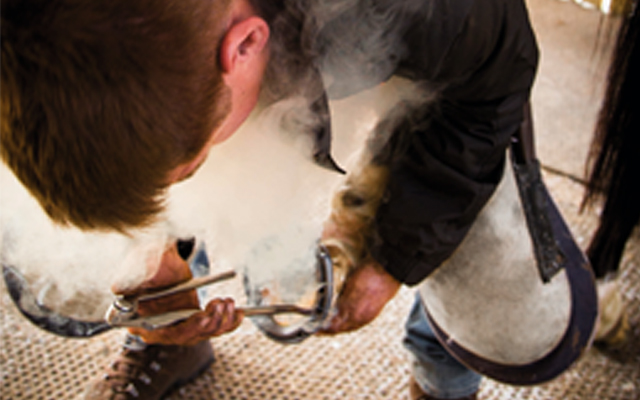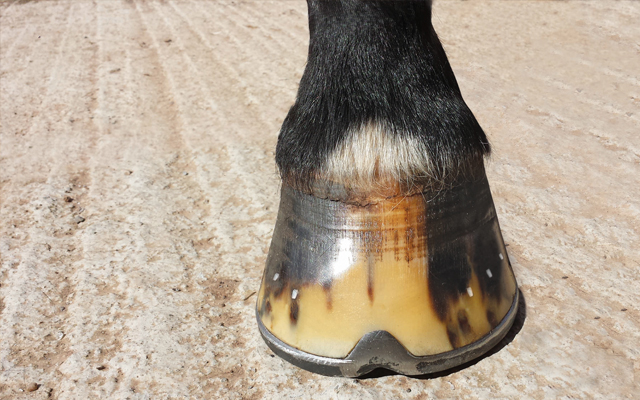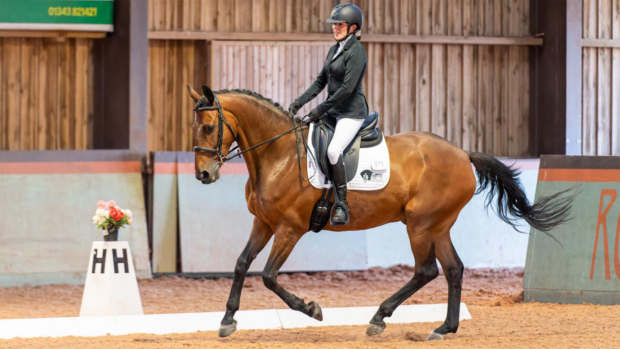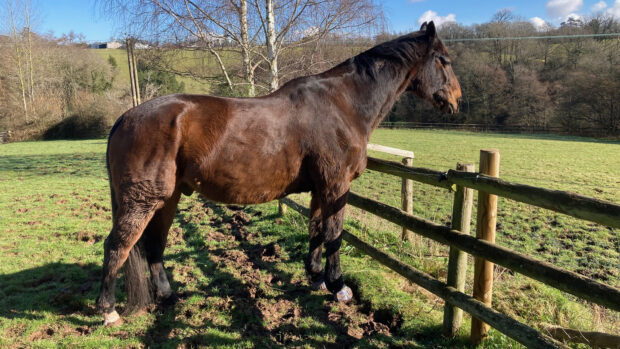Advertisement Feature
“No hoof, no horse” is a well-known saying in the horse world, and with good reason. Horses in the wild are predisposed to good quality hooves as constant roaming encourages growth while naturally paring them down.
Our modern, domesticated horse leads a very different life with us. This modern lifestyle can be detrimental to hoof health and there are many environmental challenges that act as catalysts, resulting in a change to the moisture content in the hoof and therefore weakening the structure.
There are several factors that can help encourage strong hoof growth;
- Good management
- Good farriery
- Great nutrition
The structures within the hoof
The hoof encases and protects bones, tendons, ligaments, a hugely complex matrix of blood vessels and the delicate laminae, which all work together to aid propulsion, traction and concussion by acting as a shock absorber. The continual regeneration of the hoof is therefore vital in providing on-going physical support for the bodyweight of the horse. Hoof size is proportional to the horse’s body size, and a strong, well-shaped hoof that is the right size for the horse will evenly distribute bodyweight across the foot so there are no areas of weakness.

Hoof growth
A hoof should naturally grow on average six to 10 mm each month, giving your farrier a good foot to work with and adequate growth to trim and shape the hoof every six to eight weeks. Slower growth may be due to a number of reasons:
· External temperature
· Environmental moisture
· Genetics
· Nutrition
· Exercise
· Illness/injury
When the rate of growth is good but quality of horn is poor, the hoof is left cracking, crumbling and prone to having chunks missing. Without healthy growth it becomes difficult for your farrier to manipulate the shape of the hoof for performance, and when it comes to shoeing the focus becomes simply keeping the new shoe on.
Shoeing for performance brings its own challenges. Some horses typically wear their shoes out faster than others, while different disciplines can have an effect on shoe wear. A worn shoe will have more movement and needs to be seen to by a farrier as soon as possible, as a vicious circle may commence (see figure 2, above right).
The impact of the hoof’s shape
No horse has perfect conformation and no horse has perfect hooves. A horse’s conformation will often affect their way of going and research tells us that working with conformational issues rather than trying to correct them will get the best result. For example, a pigeon-toed horse is likely to wear the outside of the shoe heavily and providing there is enough hoof growth, a remedial farrier will be able to work with the hoof shape to allow consistent free movement, instead of trying to force a “balanced” hoof. This is likely to produce a more sound horse rather than trying to correct something that is out of our control.

Factors affecting hoof condition
Riding on surfaces is popular, but sand can be very abrasive for the hoof surface. Factors such as temperature and weather can also have an effect on hoof condition, but it is moisture that is likely to have the greatest influence. Hoof moisture is directly linked to hoof quality and continually evaporates from the hoof wall, so must be replaced or compensated for. In the first instance this is done internally through the blood and lymph systems, which can replenish moisture in the horn cells. However, the wall can also draw moisture from its environment and, depending on what the British weather is doing, this can either be a great help or a hindrance. We will often have glorious sunshine for a week followed by downpours, and it is these dramatic changes in the moisture level of the environment that seem to play havoc with condition of horses’ feet.
Due to our changeable weather, experienced farriers believe we should be providing daily external moisture for hooves, reducing the effects of those environmental changes that may dry the hoof and lead to cracking. It’s no different to you applying a daily moisturiser to your own hands. At the opposite end of the spectrum, excessive moisture from things such as standing in mud through the winter can distort the hoof structure internally. It’s likely this is why we see such a rise in abscesses in winter.

So how can we support hoof growth?
It is possible to have a positive effect on hoof growth through changes to our horses’ diet. Many horse owners are already aware of the perceived benefits of biotin, which is synthesised naturally in the horse’s own gut through efficient bacterial fermentation of fibre. Biotin can be added to the diet to help keep your horses hooves healthy. Recommended daily levels are between 15mg and 30mg, depending on the size of the horse or pony, to keep hooves healthy.
What if your horse needs additional support?
Sometimes good basic diet and management is not enough, as many horse owners and farriers acknowledge. Poor quality hoof growth is not always linked purely to biotin levels, but can be affected by tissue production as the hoof is a specialised part of the skin, or dermis. Additional nutritional support for tissue growth and the liver, part of the body’s own defence system, will therefore have an even greater positive effect, which will be seen in hoof strength and integrity.
many horse owners and farriers acknowledge. Poor quality hoof growth is not always linked purely to biotin levels, but can be affected by tissue production as the hoof is a specialised part of the skin, or dermis. Additional nutritional support for tissue growth and the liver, part of the body’s own defence system, will therefore have an even greater positive effect, which will be seen in hoof strength and integrity.
Good quality hoof growth can be hard to achieve as there are many factors that can affect performance. However, with good management alongside a sound diet containing quality nutritional support both internally and externally, you can help to support your farrier so he can concentrate on working to stamp out bad feet, and help maximise your horse’s performance.
Help or Advice
If you require any more information or advice about feeding or supplementing for these or any other conditions, please call NAF on their free nutritional helpline on 0800 373106 Or email info@naf-uk.com who will be pleased to help.




